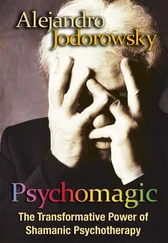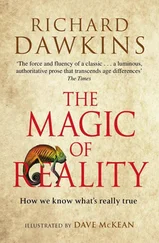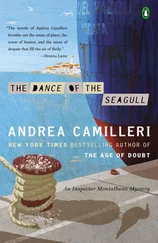Don Rogelio is known as the Rabid Healer. He is an old man, thin, yellow skinned, toothless, dressed in black with a skull ring on each finger. He says, “People are envious, and they act on it. Jealousy entangles the spirit; envy causes damage. So they must be found and driven out.” He cites the Gospel of Luke, in which Jesus healed a man possessed by an unclean spirit, shouting at the demon with compelling authority, “Come out of him!”
“When the spirit is tangled, I follow the example of our Lord and liberate it by force.” Don Rogelio, standing in front of the patient, whips the air around the latter’s body with a red rooster, uttering thunderous cries of rage:
“Get out, you fucking bastard! Go! Go! Leave this Christian in peace!”
From him, one learns that one must proceed with total certainty and absolute authority. The slightest doubt causes failure. There is a Zen saying: “One grain of dust in the blue of midday darkens the whole sky.”
I attended the healings performed by Don Carlos Said at various times throughout the years. Beside Pachita he is one of the most creative healers, in constant development and adding new elements to his sessions. When I visited him for the first time he received me in a room of his large apartment in an old building not far from the city center. People were waiting in the lounge amidst vases of flowers and paintings depicting Christ. Many people told me that Don Carlos had cured them of dangerous cancers. He had a small altar, similar to those in Catholic temples. Beside it was an old Spanish-style wooden chair with red velvet cushions. According to Said, although we did not see her, his teacher, Doña Paz, was sitting there. This wise old lady saw the patients and referred to them as “little boxes”—forms containing different elements, illnesses, pains, and so forth. She dictated the remedies to him that would cure these evils. Years later, Don Carlos Said converted the second floor of his home into a temple.
Upon entering, the hopeful visitors find themselves among rows of chairs, arranged as in a church or a theater. There is room for about fifty people. Before them stands an altar, a platform with twelve steps leading up to it, at the top of which is a rectangular table with seven large altar candles burning on it. At each corner of the altar is a vase of chrysanthemums. The walls are covered with pictures, truly in good taste, showing the Stations of the Cross. Don Carlos officiates dressed in white, like a Mexican Indian, and is assisted by two women in white robes who wear no makeup, their hair cut short or else tied at the neck forming a bun. They resemble nuns. To the left of the participants is a row of mattresses where the patients lie wrapped in blankets with bouquets of fresh herbs applied to their bodies.
As soon as the prospective patient enters another assistant pours a little of a magical perfume called Seven Machos onto his hands from a black bottle, then rubs it all over the patient’s head and body, thus severing the ties that bind him to the outside. He is entering a completely sacred place. Whatever the sick person is wearing, it must all be brought into the temple. Nothing may be left outside in the ordinary world. What is left behind cannot be cured. Devils are waiting, and as soon as the sick person came back out, they would pounce on him again.
The patients are treated in strict order of their arrival. But there are some who have arrived at dawn, selected for special treatment. They are sitting on a bench, their bodies and heads covered by white blankets. Under the bench Said has placed a basin full of burning coals and incense. A dense, perfumed smoke rises from it, enveloping them.
The healer asks the patient to stand barefoot in front of the altar on a triangle of salt that has been dyed black, surrounded by a circle of white salt. The first thing he does is to put a thick piece of rope with a slipknot around the patient’s neck. It sends the message, “This sickness is your sickness, your responsibility. You do not come here to give it to me. Let your spirit recognize it and turn away from it.” To emphasize this Don Carlos folds his arms tightly around the patient with his large hands closed, making a cross, then shuts invisible latches in the air. He takes three raw eggs with his left hand and begins to rub the body of his patient with them. Suddenly, he wraps the eggs in a Mexican handkerchief, a red scarf. He keeps rubbing. Then he throws the package forcefully into a container and listens as the eggs explode inside the fabric. He has removed and destroyed some of the damage. Now, holding a knife, he begins to make fierce cuts in the air around the patient. He is cutting away mad desires, mad feelings, mad ideas. He sprays alcohol in a triangle and lights it on fire. When the flames subside he takes the rope, soaks handkerchiefs in the Seven Machos perfume, and unfolding them moves them over the patient from head to toe, using the perfume as a blessing. Before leaving, he gives the patient a paper cup with filtered water and a slice of lemon dipped in black seeds. The purification must not only be external but also internal. He ends the ceremony by giving the patient a heart-shaped sugar candy to suck on. During this complex act, which varies, adding new details for each illness, Don Carlos speaks as if in a trance, revealing that someone has stuck a doll full of pins or hired a negative sorcerer to send evil. Healing is a struggle against an external enemy in which the healer, assisted by invisible allies who gather around him, is always in danger from negative entities that may attack him for having removed the evil. All healers claim that if some heal and others do not, it is because magical operations are not enough: it is necessary for a change to occur in the patient’s mentality. Those who live in constant request must learn to give.
EIGHT.From Magic to Psychomagic
When I was fifty years old, my son Adan was born. Also at that time, the producer of my film Tusk declared bankruptcy and did not pay me what he owed me. I had been in India during Valérie’s pregnancy, filming in miserable conditions with mediocre technicians — for economic reasons, according to the production company. I suspect that much of the money intended to create good quality images went into the pockets of this greedy organizer. Be that as it may, back in Paris I found that I had a tired wife, a newborn, three other sons, and a zero balance in my bank account. What little Valérie had saved in a Mexican candy box was enough to feed us for ten days, no more. I called a millionaire friend of mine in the United States and asked him to lend me ten thousand dollars. He sent five thousand. We left our spacious apartment in a good neighborhood, and under miraculous circumstances found a small house in Joinville le Pont on the outskirts of the city, where I was forced to make a living giving Tarot readings. All this, looking back on it now, was not a misfortune but a blessing.
Jean Claude, always concerned with finding the origins of diseases — since like the shamans he considered illnesses to be the physical symptoms of psychological wounds caused by painful family relationships or social relationships — had sent me to do Tarot readings for his patients on Saturdays and Sundays for two years. I always did it for free, and often with good results. Now that I was living in poverty, with pressing family responsibilities, I was forced to charge for my readings. The first time I held out my hand to receive money for a consultation I thought I would die of shame. That night, while my wife and sons slept, sitting on my heels as Ejo Takata had taught me to do, I knelt and meditated in the solitude of the little room that I had transformed into a temple of the Tarot by means of a rectangular violet rug. The monk had said, “If you want to add more water to a glass that is already full, it must be emptied first. Thus, a mind full of opinions and speculations cannot learn. We must empty it in order to create a condition of openness.” Once I calmed down and saw the shame as a passing cloud, realizing that it was pride in disguise, I recognized that I was not a public charity and that the act of reading the Tarot had a noble therapeutic value. But doubts assailed me. Was what I read in the cards useful for the client? Did I have the right to do this professionally? I thought again of Ejo Takata. When the monk lived in Japan, every year he paid a visit to a small island where there was a hospital for people with leprosy — which in those days was incurable — in order to perform a social service. There, he learned a lesson that changed his life. While walking together along a cliff side, the visitors walked in front and the lepers behind so that spouses, parents, relatives, and friends would not have to see the mutilated bodies of their loved ones. At a certain point, Ejo stumbled and was on the point of falling off the cliff. At that moment a sick man hurried to save him but, looking at his own fingerless hand, did not want to touch Ejo for fear of infecting him. Desperate, he began to sob. The monk regained his balance and went to the sick man, thanking him with great emotion for his love. This man, so much in need of compassion and help, had been able to forget his ego, acting not for his own benefit but with the intention of helping someone else. Takata wrote this poem:
Читать дальше












